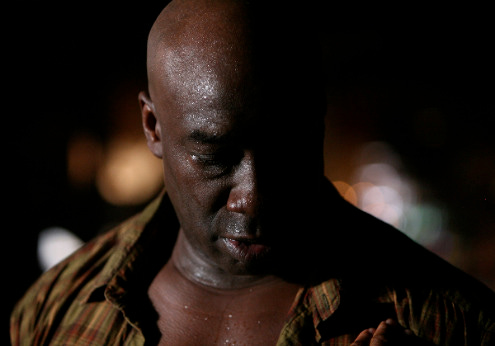Black, White and Blues

The fun title Black, White, and Blues refers to its main character, a rather upset guy by the name of Jefferson Bailey (Morgan Simpson). Filled with relationship difficulties and alcohol, he is the prime person to sing the blues. Unfortunately he’s plagued with crippling stage freight. He can’t even physically be on the stage for too long.
After a sour bar brawl with Luke Perry, Bailey hops into the ride of a man named Augy (Michael Clarke Duncan). Augy has been pestering Bailey to go back home so he can receive his potion of a will. Both of them are extremely fascinating characters full of depth and mystery.
While watching this film, it’s difficult to realize that it actually is a road trip movie. Sure, there are a few minor detours and there is a clear path but you get too caught up in the narrative of these characters. The screenplay, written by Simpson and George Richards, handles its characters so well. Tales of redemption are difficult because in order for there to be emotional payoff, the film has to instantly establish the character and provide a believable arc. Black, White, and Blues does that with ease.
The most memorable part of the movie is its visual style. Its cool colors and impressive lighting design makes each frame rewarding. Mario Van Peebles further proves himself as one of today’s unsung directors. He was great with his feature Baadasssss! and his work on the TV shows Damages and LOST. He has a clear vision but the real skill is combining the visceral elements without ever neglecting the character arcs.
With a story like this, the ending can be everything. When something is alluded to for over an hour, there is some expectations of what is in the box. Its conclusion does end up being surprisingly satisfying in a more unconventional way. The whole movie is clever and will end up staying with you.


